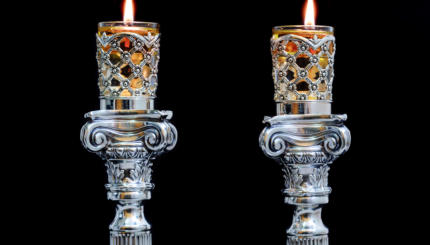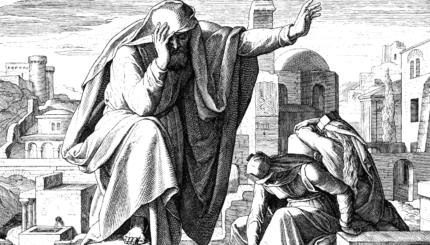Reprinted with permission from The Jewish Holidays: A Guide and Commentary (HarperCollins Publishers Inc.).
An important underlying theme of Sukkot is its messianic and universalistic character. Coming at the end of the agricultural year and the end of the pilgrimage cycle, Sukkot marks the end of a passage of time. It thereby anticipates the messianic end of days for all people. During Sukkot a total of 70 sacrifices were brought into the temple, corresponding to the tradition’s count of the number of nations in the world. In the days to come, all nations will go up to Jerusalem on Sukkot to worship God, as it is written:
“And it shall come to pass that everyone that is left of all the nations that came against Jerusalem shall go up from year to year to worship the King, the Lord of Hosts, and to keep the feast of tabernacles” [Zechariah14:16].

This vision of universal brotherhood is reflected in the sukkah, whose door and roof are open to all. The sukkah, in turn, evokes a vision of God’s sukkah as a house of prayer for all nations. In that future, God will spread a sukkat shalom–a sheltering cover made of peace and harmony. Even as we remember the desert period of old, having reached the end of time, we eagerly await the redemption, the crossing over into the promised land.
And yet the sukkah, while evoking the image of God sheltering us in the future, raises another, opposing image: The sukkah as a temporary structure open to the winds of autumn cannot help but remind us of the Jewish people’s experience of the last 2000 years of exile and wandering. Are we not the prototypical alien–the wandering Jew? Are not the 40 years in the desert–the period Sukkot commemorates–the archetype of our 2000 years of wandering?
The sukkah, then, evokes opposing sets of images: rootlessness and home, wandering and return, exposure and shelter. Just as matzah is both slave bread and free bread, the sukkah stands for the contradictory realities of our lives. From exile to eternity and back again–this, too, is contained in the four walls of the sukkah.
sukkah
Pronounced: SOO-kah (oo as in book) or sue-KAH, Origin: Hebrew, the temporary hut built during the Harvest holiday of Sukkot.
Sukkot
Pronounced: sue-KOTE, or SOOH-kuss (oo as in book), Origin: Hebrew, a harvest festival in which Jews eat inside temporary huts, falls in the Jewish month of Tishrei, which usually coincides with September or October.


